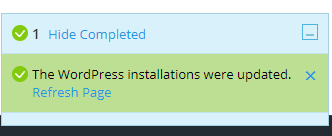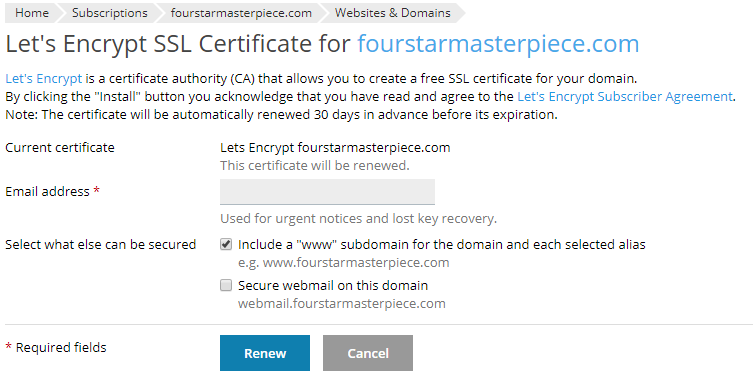Plesk Onyx, the control panel used with Managed VPS, comes with the WordPress Toolkit, an easy way to manage WordPress installations on your VPS.
I’ve been playing with the WordPress Toolkit on my Managed VPS, and here are five neat things about the WordPress Toolkit (and one very neat thing about Plesk Onyx).
Update everything without even having to log in
Do you have a dozen WordPress sites that all need the latest release? Discovered your favourite plug-in just released a brand new version? If you’re already dreading sending emails to customers, or you’re booking out the hours you’ll need to manually update each one, it’s dead easy with the WordPress Toolkit.

Just select all and click “update”. And that’s it! Everything gets updated to the latest version, no need to chase people, and if you have one site that you don’t want to update just yet, you can leave it off your giant update pile.
You can also set up automatic updates – where you don’t even have to go in yourself. This is only for the main WordPress software, not for plug-ins and themes, so if you’re worried about a plug-in not working after a major update, keep it for just “minor” updates, which are all the security patches.
Add themes and plug-ins across multiple sites
Found a great new SEO plug-in you want to give to everyone? Built a new theme that really fits your customers’ style? Or just want to add the lyrics to “My Lovely Horse”? You can install and activate themes and plug-ins across all the sites quickly and easily with the WordPress Toolkit.

Find the one you want, and install it without activating it – it’ll automatically install onto all your WordPress installations if you want it to, or you can select which ones it goes to. Activate it, deactivate it, or update it no matter where it is, and all from one location.
You do have to look up what you want to install on WordPress.org if you want more information, like seeing what it does and how well it’s rated, but if you’ve already done your research, it’s a really easy way to get everything you need set up right away.
Check your security on a regular basis
You can tighten security even further with the “Check Security” option. It’ll go through your WordPress installations and make sure all your ducks are in a row, including content and includes folders, wp-config.php, database prefix, administrator’s username, permissions for files, and version information.

Once it knows what needs to be fixed, it gives you the option of fixing it all with just a click of a button, or going through and sorting out the problem yourself. And even if you do change some things, like permissions for directories, you can roll back when you need to.
Cloning and synchronising
With the WordPress Toolkit, you can also make a clone of an installation and put it somewhere else, or you can have two installations synchronising.

This is great if you want a staging playground to try out new things while your current site chugs along merrily, or if you’ve built the absolute perfect WordPress site package that you can roll out to multiple customers with a minimum of text changes.
A clone creates a full copy, from theme to database to settings, and synchronisation lets you synchronise files, the database, or both with just a couple of clicks. Both provide you with a great way to experiment with WordPress without touching your live site.
Add existing WordPress installations into the Toolkit
If you’ve moved to a Managed VPS from another VPS, or you’ve installed Plesk Onyx onto your server, you will probably have WordPress installations all over the place. And just by hitting “Scan”, it’ll find and add all the installations of WordPress.
This makes it easy to finally get all those versions correct – giving you a uniform, secure, and easy to manage army of WordPress sites.

If at any point, a customer doesn’t want to be managed in the WordPress Toolkit, you can detach it, meaning that it’s still on your server, and you can still access it, but the WordPress Toolkit won’t list it for updates, plug-ins, themes, or security issues.
Those are five great things about the WordPress Toolkit, but one thing that might cause an issue for you is that when it installs WordPress onto sites, it automatically sets it up to be HTTPS.
This can bring up errors, but Plesk Onyx has a little something that’ll make your life so much easier.
Let’s Encrypt available in Plesk Onyx
I don’t recommend Let’s Encrypt for all sites. If you’re running something like an e-commerce store, or a file system with sensitive material, then don’t take the chance – buy an SSL certificate.

But if you just want quick encryption on something, like your small WordPress site, then it’s wonderful. A couple of clicks, and HTTPS is all ready to go!
I’m still learning the ins and outs of my Managed VPS, but I definitely know that the WordPress Toolkit makes it easy for me to keep on building sites. Why not give it a go yourself?

Comments
Please remember that all comments are moderated and any links you paste in your comment will remain as plain text. If your comment looks like spam it will be deleted. We're looking forward to answering your questions and hearing your comments and opinions!